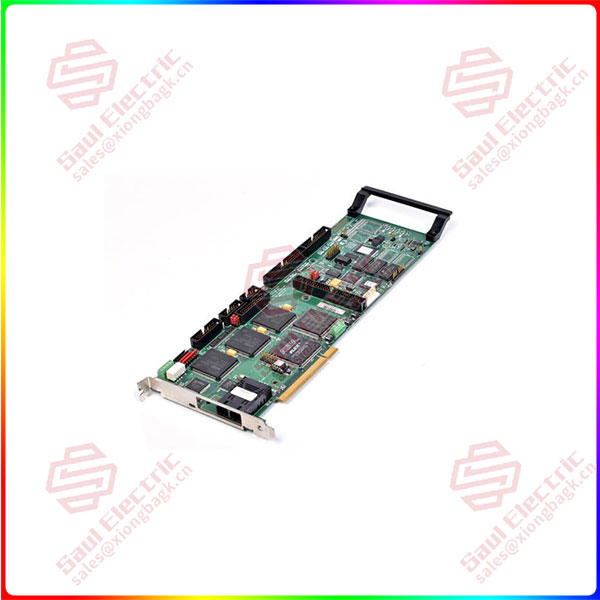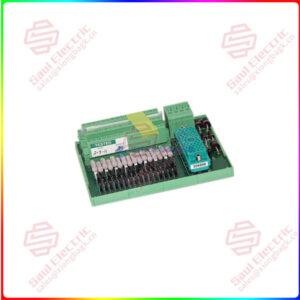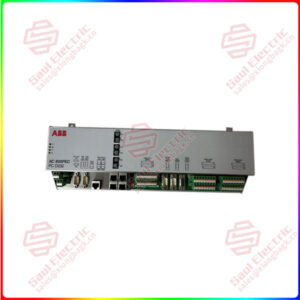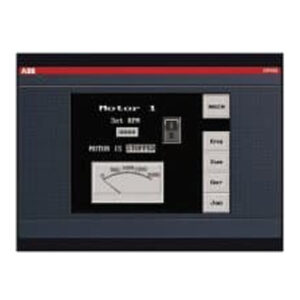Description
Overview
Essential details:PMAC-PCI-LITE 4-axis with ±10V Servo Outputs PCI Board
Number of Channels
The Turbo PMAC-Lite PCI can have only one on-board DSPGATE that provides four channels axis interface circuitry, each including:
– 16-bit ±10V differential analog output
– Differential/single-ended encoder input with ‘A’, ‘B’ quadrature channels and ‘C’ index channel
– Four input flags, two output flags
– Interface to external 16-bit serial ADC
CPU and Memory
The Turbo PMAC-Lite PCI is provided with an 80 MHz DSP56303 CPU (120 MHz PMAC equivalent) and flash memory. Any variable change in a flash type memory needs to be saved manually in Turbo PMAC for it to be retained on a powerup\reset cycle. Therefore, if machine parameters like parts counters or state variables are required, the Option-16A batterybacked parameter RAM is suggested.
· Option-5C0: this is the standard CPU and memory configuration. It is provided automatically if no Option-5xx is specified. It provides an 80 MHz DSP56303 CPU (120 MHz PMAC equivalent), 128k x24 of compiled/assembled program memory, 128k x 24 of user data memory, and a 1M x 8 flash memory.
· Option-5C3: it provides an 80 MHz DSP56303 CPU (120 MHz PMAC equivalent) with 8k x 24 of internal memory, an expanded 512k x 24 of compiled/assembled program memory, an expanded 512k x 24 of user data memory, and a 4M x 8 flash memory.
· Option-5D0: it provides a 100 MHz DSP56309 CPU (150 MHz PMAC equivalent) with 34k x 24 of internal memory, 128k x 24 of compiled/assembled program memory, 128k x 24 of user data memory; and a 1M x 8 flash memory.
· Option-5D3: it provides a 100 MHz DSP56309 CPU (150 MHz PMAC equivalent) with 34k x 24 of internal memory, an expanded 512k x 24 of compiled/assembled program memory, an expanded 512k x 24 of user data memory, and a 4M x 8 flash memory.
· Option-5E0: it provides a 160 MHz DSP56311 CPU (240 MHz PMAC equivalent) with 128k x 24 of internal memory, 128k x 24 of compiled/assembled program memory, 128k x 24 of user data memory; and a 1M x 8 flash memory.
· Option-5E3: it provides a 160 MHz DSP56311 CPU (240 MHz PMAC equivalent) with 128k x 24 of internal memory, 512k x 24 of compiled/assembled program memory, 512k x 24 of user data memory; and a 4M x 8 flash memory.
· Option-16A: 32Kx24 SRAM battery-backed parameter memory

PMAC-PCI-LITE
lf you need to inquire or purchase ,please send the product models to my email or call medirectly .
sunny He
[Email] sales@xiongbagk.cn
[Mobile] 86-18059884797
[WhatsApp] 86-18059884797
[Skype] sales@saulcontrol.com
PMAC-PCI-LITE 4-axis with ±10V Servo Outputs PCI Board
Firmware Version
PMAC is provided with the latest firmware revision with the regular servo algorithm.
· Option-10: Through this option an older than the latest firmware released version could be ordered on-board. When possible, use the same firmware revision for similar machines, and this is important in cases where the new PMAC is a replacement in an already existing machine or a new machine using same existing programs is developed.
Miscellaneous
The following ports are provided standard in any PMAC:
· Display port for the connection to a vacuum fluorescent or liquid crystal display
· JOPTO Port: this port provides eight general-purpose digital inputs and eight general-purpose digital outputs at 5 to 24 VDC levels and a maximum of 100 mA per output. This 34-pin connector was designed for easy interface to OPTO22 or equivalent optically isolated I/O modules when different voltage levels or opto-isolation to the PMAC board is necessary.
· Multiplexer Port providing eight input lines and eight output lines at TTL levels. When using the PMAC ACC-34x type boards these lines allow multiplexing up to 1024 I/O lines on the port.
· Control panel port with dedicated control inputs, dedicated indicator outputs, a quadrature encoder input, and an analog input (requires PMAC OPT-15).
Most options to the PMAC board are only possible to install in factory whereas most accessories for PMAC can be ordered and installed at a later stage. Therefore, it is important to order all the necessary options at the time when PMAC is ordered.
· Option-7: Plate mounting for standalone applications. PMAC is mounted in an aluminum plate allowing its installation as a stand-alone controller.
· Option-8A: The standard clock crystal in PMAC has ±100 ppm accuracy. Through this option a high-accuracy clock crystal (±15 ppm) is installed instead. This option is required only for an accurate synchronization and velocity accuracy for long-term applications. Generally, this will be noticeable only if a continuous move sequence lasts more than 10 minutes.
· Option-12: 8-channel on-board 12-bit A/D converter. With this option extra components are added on the PMAC board for eight analog-to-digital converters with 12-bits resolution and 0-5 or ±2.5V range. Typically this option is used for analog sensors reading but not used regularly for analog sensors feedback devices.
· Option-12A: Extra 8-channel on-board 12-bit A/D converter. This option requires Option-12 and provides a total of 16 analog-to-digital converters with 12-bits resolution and 0-5 or ±2.5V range.
· Option-15: Voltage to frequency (V-to-F) converter to use control panel port analog input. This feature uses one of the encoder channels in PMAC to provide a low-resolution method of a single analog input interface.
· Option-18A: Electronic board identification number module. This option could be used to let a host computer program identify the Turbo PMAC board connected to the machine.


 1 Year Warranty
1 Year Warranty



